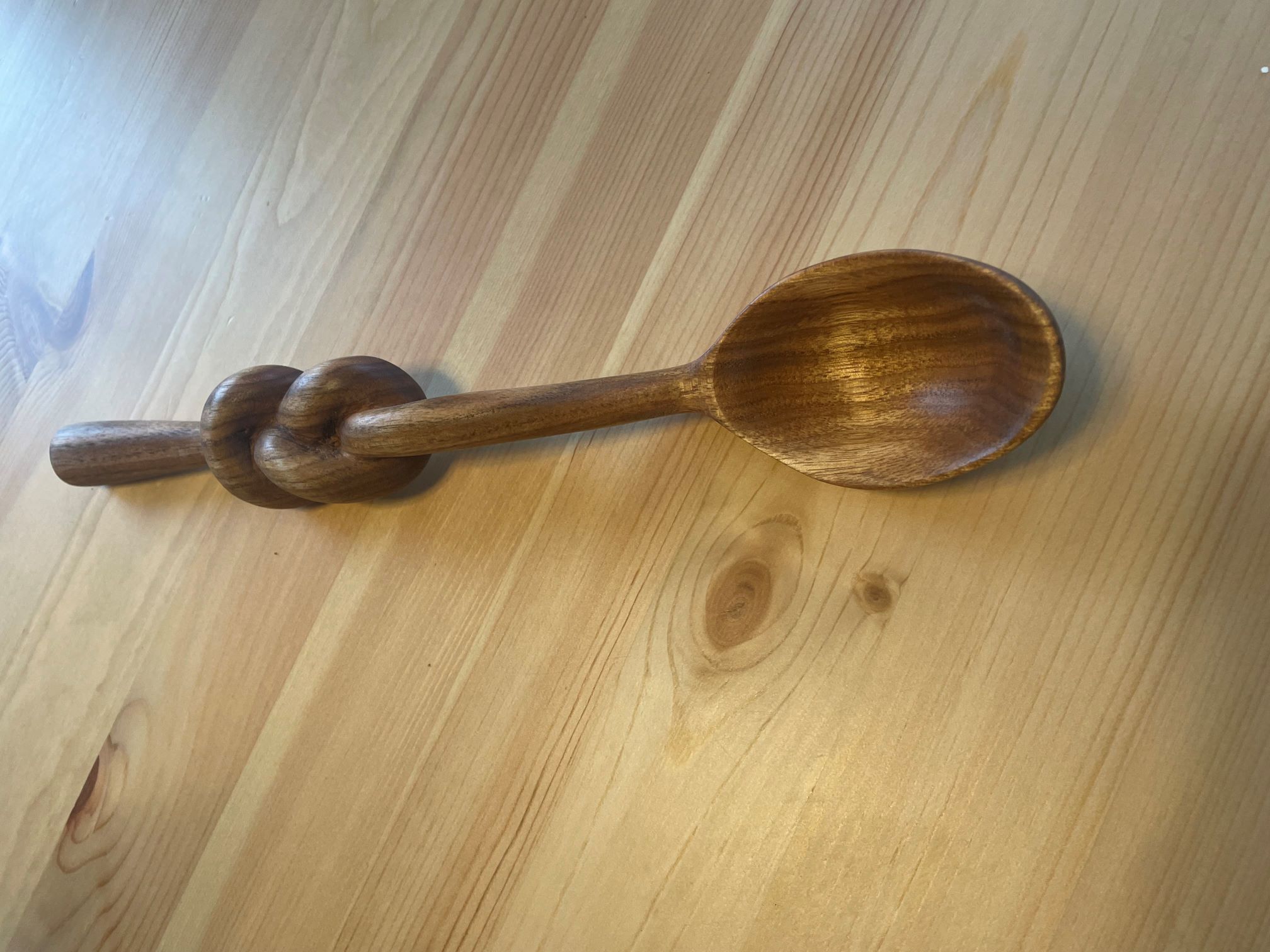It’s been a busy year. Started a new professorship; moved to Ohio. Rented an apartment; moved into it. Bought a home. Moved into that. Sold our home in Georgia. Moved out of that. Taught six courses, three of which I had never taught before, and guided one directed study. Got two new courses approved and proposed a new minor. Revived a research project with two motivated undergrad research assistants… all in a new university setting. I’ve done everything but carve. I miss carving.
I have carved five spoons in the past eight months. That’s not very many. Yet, it’s when I carve that I have time to reflect… about work, about life, about woodcarving. So, this blog post is probably going to be brief.
It’s now mid-summer. Should be a slow time for a professor who doesn’t teach from mid-May to mid-August. But I can measure my slow time in hours, not days or weeks. I keep asking myself the same question in two different ways: 1. How can I slow down enough to carve? Or, alternatively, 2. How can I make time to carve so that I will slow down? It’s a chicken-or-the-egg dilemma. I don’t yet know a way through it.
What I do know is that wood carving is good for my mind, for my emotions, and for my soul.
When I first put up this website, my intention was to use it to showcase… and subsequently, to promote the sale of… my spoons. I am going to change that. I’m going to make it simply a gallery.
Soon after we moved to Ohio, I found a local art studio that was willing to sell my carvings on consignment. It didn’t work out. I learned that if I am going to display my spoons for sale, then I need to design a more attractive way to display them. I also need to tell “my story” more effectively than I have done. But my real learning from that experiment was something about my own well-being.
After they had been on the market for about six weeks, I concluded that one reason my spoons weren’t selling is that there weren’t enough of them. Remember the old saying that you can’t sell apples from an empty cart? With that in mind, I set out (in the midst of my busy-ness) to carve more of them. That’s when I succumbed to a mental trap. I went from carving spoons to “producing inventory.” Feeling that I had to carve more, faster, took the joy out of what I was doing. And the spoons that I “produced” were rather ordinary. They weren’t bad, just ordinary.
Why was I doing this to myself? Even if I had sold them all, I would have netted about $2 an hour. Why bother? To produce them faster, I would have had to use more power tools and cad/cam machines like so many other spoon sellers do. And that’s not the reason I took up carving.
So, I decided to take them off the market and to return to carving just for fun. Guess what happened? My two most recent spoons are, I think, two of my “best” ever. I enjoyed the process from start to finish, and I enjoyed the end result of both.
My decision to try carving a knotted spoon probably arose from an unconscious compulsion to express the “knots” I had felt inside while trying to produce work for sale. I don’t know. But I do know that it was therapeutic to design and carve that spoon—one that really stretched my current skill as a carver.

Maybe (but just “maybe”) whenever I retire from teaching, I’ll try selling spoons again. If I do, I’ll incorporate the lessons I learned during my recent attempt at selling. But for now, I have decided simply to enjoy the pursuit of this craft and to cherish the psychological benefits it brings me. I’m not going to try to sell my spoons; I’ll give them to friends and family. And I’ll keep some on display at our home.
Now that I pause to reflect upon it, I learned a lot about myself, about my inner motivations, about the meaningfulness of making crafts, and about how to prioritize things in my life during this past year of very little carving.